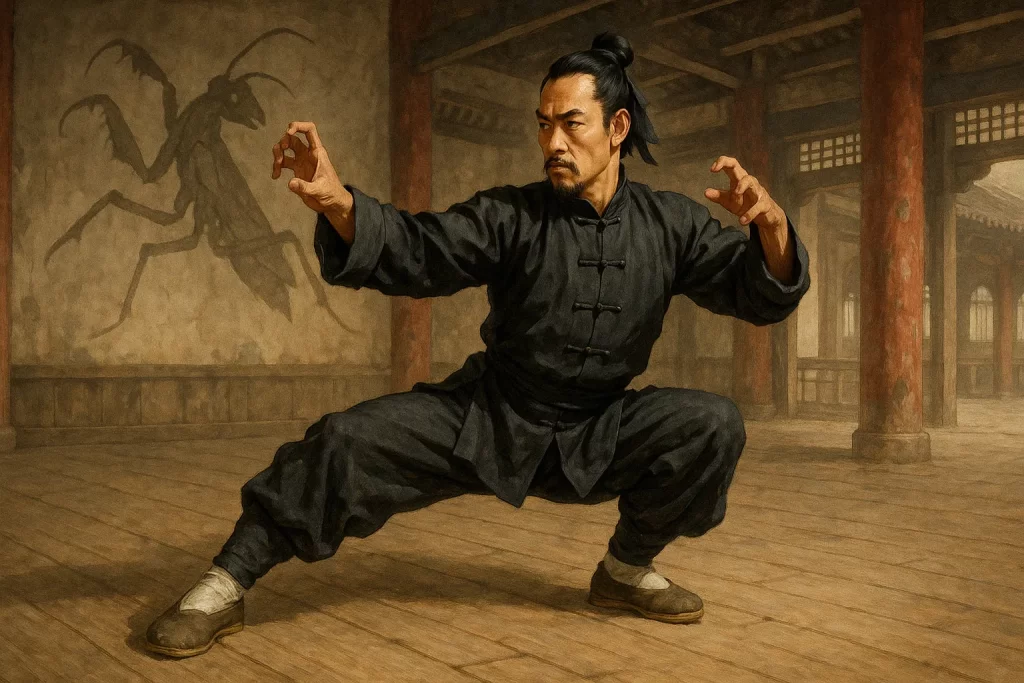Praying Mantis

Praying Mantis Kung Fu (Tanglang Quan) is a traditional Northern Chinese martial art inspired by the speed, precision, and trapping strategy of the praying mantis insect. It is known for its fast hand techniques, claw-like strikes, joint control, and intricate footwork. The system blends softness and hardness with sudden explosive bursts, often using deception, redirection, and overwhelming combinations. Developed during the Ming or early Qing dynasty, Praying Mantis is one of the most technical and detail-oriented Kung Fu styles, requiring high coordination and timing. Today, it is practiced worldwide in various branches, including Seven Star, Plum Blossom, and Eight Step.
Praying Mantis Essentials
About Praying Mantis
Discover Praying Mantis Kung Fu—a fast, deceptive, and highly technical style known for its claw-like hand strikes, trapping skills, and precise offensive counters.
Praying Mantis History
Explore the origins of Praying Mantis, from its creation by Wang Lang to its growth in Shandong Province and its branching into multiple influential lineages.
Philosophy & Approach
Learn how the style’s philosophy mirrors the praying mantis: patience, sudden attack, and control. Mental clarity, adaptability, and tactical deception are key pillars.
Techniques & Style
Dive into signature techniques like hook hands, snatching, short-range strikes, and compound trapping. Discover why coordination and timing are vital to this combat system.
Traditions & Etiquette
Understand the training etiquette of Praying Mantis schools, where humility, discipline, and respect for lineage are upheld through traditional martial protocols.
Uniform & Symbols
Explore the distinctive attire and symbols of Praying Mantis practitioners, often including mantis emblems and school-specific crests honoring regional heritage.
Weapons
Study the classical weapons of Praying Mantis—straight sword, staff, twin hooks, and butterfly swords—each taught with speed, trapping angles, and agile transitions in mind.
Ranking System
See how Praying Mantis schools approach ranking—some using modern sash systems, others relying on traditional lineage-based acknowledgment and form progression.
Praying Mantis Glossary
Familiarize yourself with terms like “Lou Tsai,” “Beng Bu,” or “Gwa Choy” that define the movement vocabulary and strategic methods used in Mantis training.
Notable Figures
Meet key historical and modern masters—from Wang Lang to Luo Guangyu—whose teachings shaped the diverse branches and modern evolution of Praying Mantis.
Branches & Organizations
Explore the major branches of the art, including Seven Star, Plum Blossom, Eight Step, and Tai Chi Mantis—each with unique strengths and regional influences.
Competitive Format
While traditionally combative, Praying Mantis also appears in modern forms and sanda events. Learn how its techniques are adapted to competition and performance.

